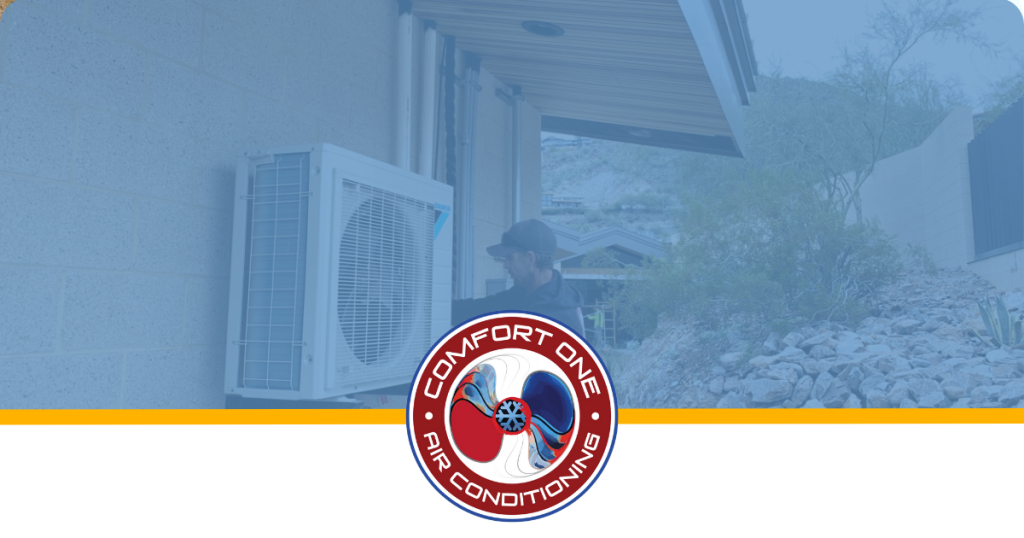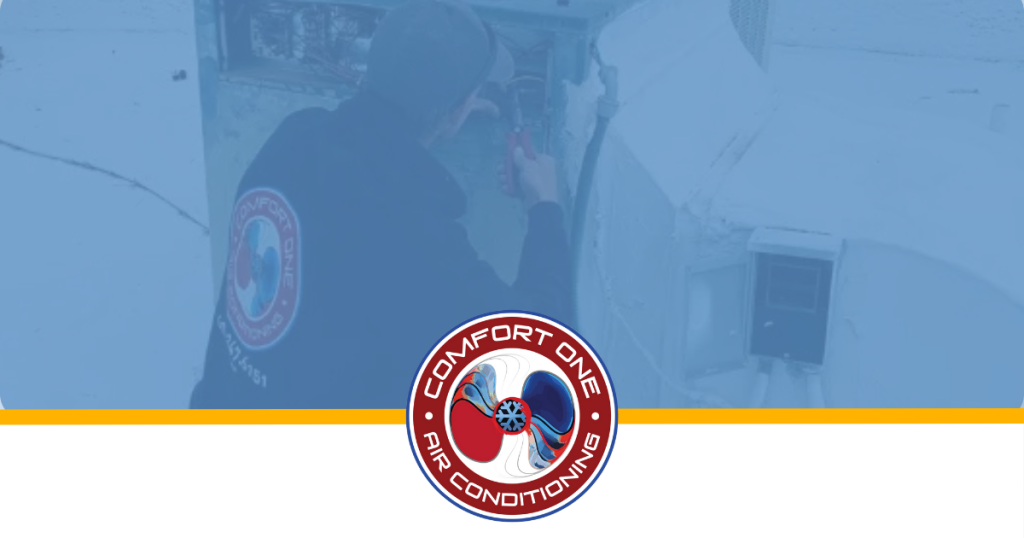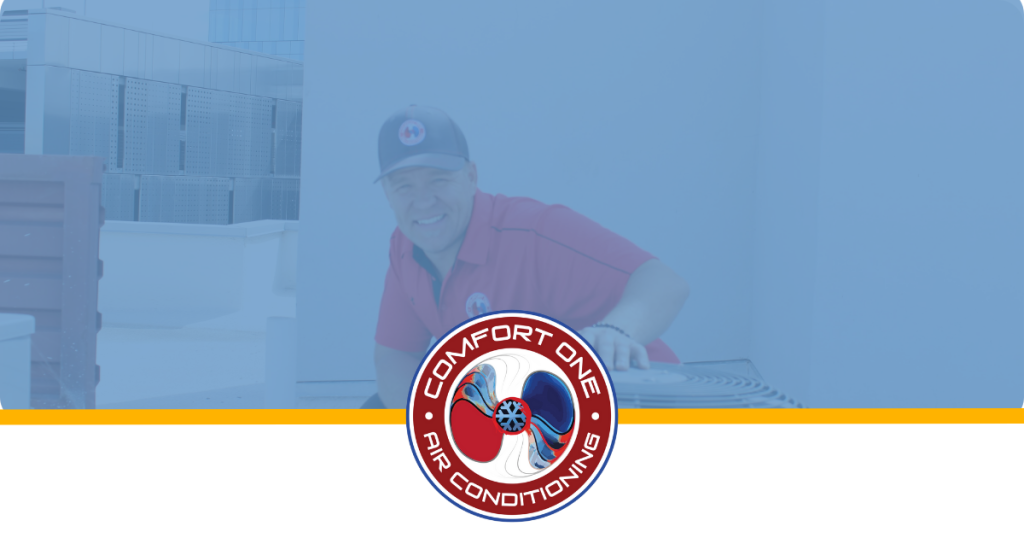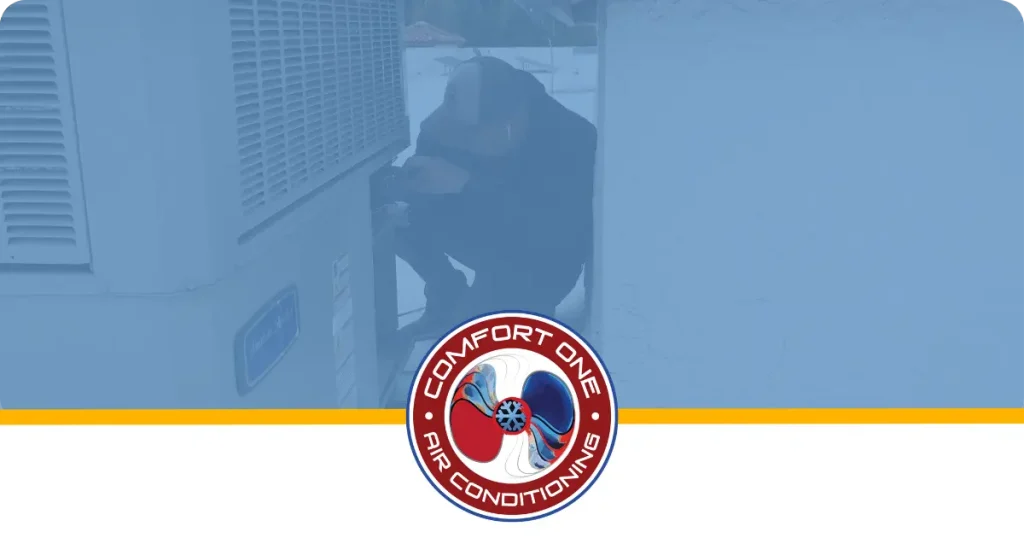Monsoon dust can damage your HVAC system, leading to issues such as clogged filters, reduced efficiency, and potential system failures. The impact of monsoon dust HVAC damage during dust storms in Arizona is significant, especially during Arizona’s monsoon season, which typically brings high humidity, dust storms, and extreme temperature fluctuations that put extra strain on air conditioning units. Residents in the Phoenix area are particularly affected by these seasonal challenges. This article explains how to protect and maintain your system effectively.
Key Takeaways
Monsoon dust and strong winds can significantly impair HVAC and AC system performance by clogging filters, decreasing efficiency, and leading to higher energy bills.
Regular maintenance, including cleaning outdoor units and changing air filters, is crucial to protect HVAC systems, the AC system, and the air conditioner from dust-related damage during monsoon season.
Upgrading to high-efficiency air filters and utilizing smart thermostats can enhance indoor air quality and optimize energy usage throughout the monsoon season.
How Monsoon Dust Affects Your HVAC System
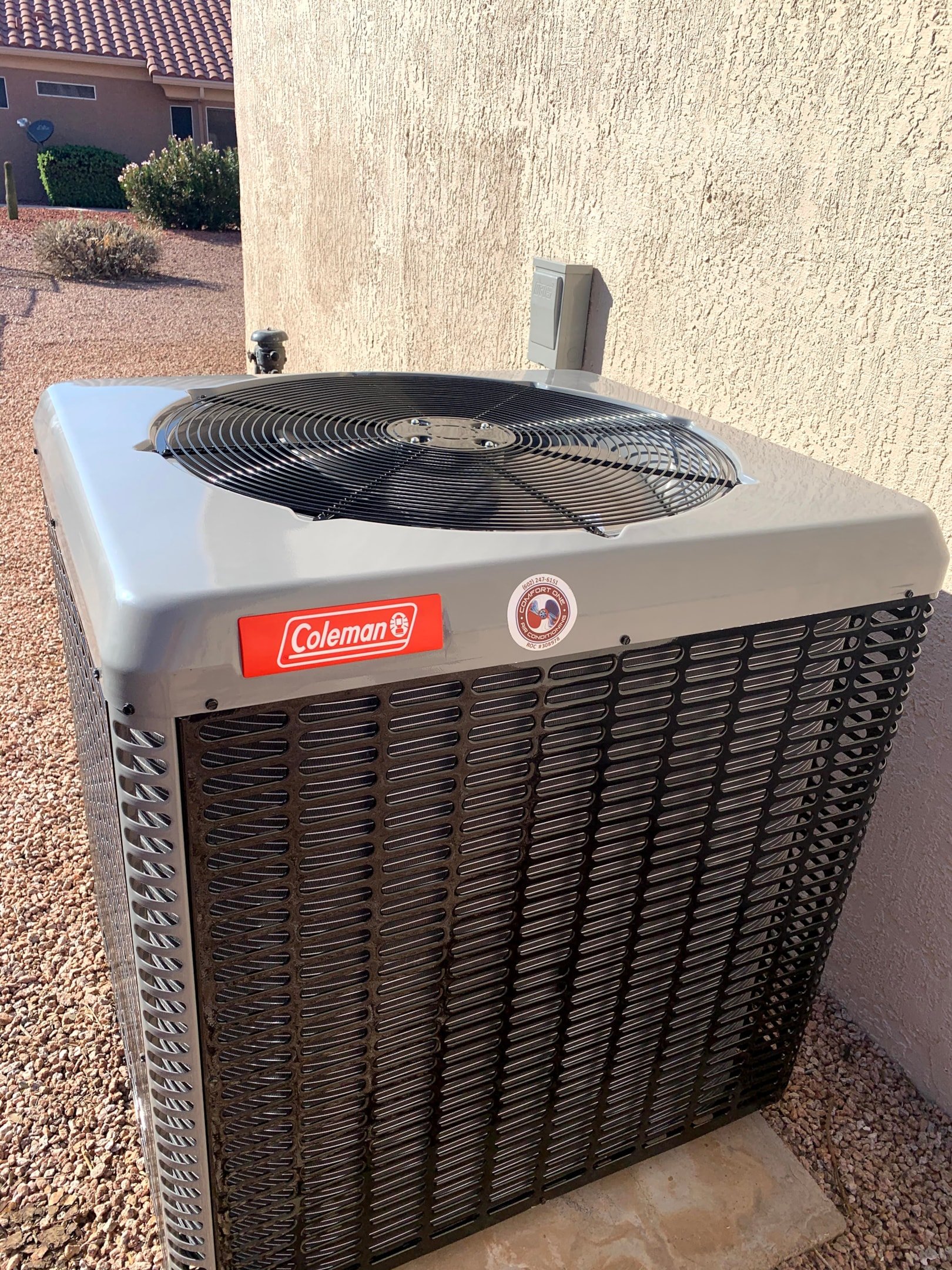
Monsoon dust storms are a common sight in Arizona’s monsoon season. These storms can introduce fine dust particles into your HVAC system, leading to a range of issues: Dust storms can cause poor indoor air quality by allowing fine particles to circulate throughout the home, exacerbating allergies and respiratory issues.
Air filters become clogged with dust, restricting airflow and resulting in decreased indoor comfort.
The increased workload on your air conditioning system reduces its efficiency.
Higher energy bills due to the system working harder.
Potential system failures caused by the added strain in the dusty air during Arizona monsoons and monsoon winds.
The presence of fine dust particles is particularly problematic because:
These tiny particles can infiltrate the HVAC unit, impacting both its performance and the indoor air quality.
Dust coats the condenser coils, impairing heat exchange. Fine dust on the outdoor condenser coils acts as an insulator, hindering effective heat transfer and increasing energy consumption.
The system is forced to work harder, potentially causing overheating of motors and fans.
This can lead to premature wear and tear, further compromising the longevity of your air conditioning system.
Clogged air filters are another major concern during the monsoon season. When filters are clogged, they restrict airflow, which not only affects the cooling efficiency but also leads to increased strain on the HVAC unit. It is important to inspect and maintain your AC unit during the monsoon season to prevent dust-related issues and ensure optimal performance. This can result in unusual sounds or odors emanating from the system, signaling potential dust-related issues that need immediate attention, including reduced airflow.
Replacing air filters frequently during monsoon season helps maintain proper airflow and indoor air quality. Understanding the effects of monsoon dust on your HVAC system allows you to take proactive steps to mitigate these issues and keep your home comfortable.
Preparing for a Dust Storm
Preparing for a dust storm is essential to minimize its impact on your HVAC system and indoor air quality. During Arizona’s monsoon season, dust storms can send fine dust particles swirling into your home, threatening to clog air filters, reduce cooling efficiency, and strain your air conditioning system. Taking a few proactive steps before, during, and after a dust storm can make a big difference in keeping your HVAC system running smoothly and your indoor air clean.
Before a dust storm arrives, check and replace your air filters to ensure proper airflow and prevent fine dust from circulating through your home. Sealing air leaks around windows and doors will help keep dusty air outside and maintain cool air inside, improving both energy efficiency and indoor air quality. Sealing gaps and cracks around windows and doors prevents cool air from escaping and helps reduce HVAC load. Inspect your outdoor unit for any dust buildup or debris, and clear the area to prevent blockages that could lead to system failure or costly repairs.
Consider installing a programmable or smart thermostat to optimize your air conditioning system’s performance during storm season. Smart thermostats can help you manage energy consumption and even detect changes in air quality, automatically adjusting settings to protect your HVAC system and keep your home cool.
When a dust storm hits, it’s wise to turn off your air conditioning if possible to prevent fine dust particles from entering the system and damaging internal components. If you need to keep your AC running, monitor your air filters closely and replace them as needed to avoid reduced airflow and higher energy bills. After the storm passes, gently hose down your outdoor unit to remove any lingering dust and debris, helping to restore proper airflow and cooling efficiency.
Regular maintenance and proper preparation are key to preventing dust buildup and avoiding expensive repairs. Schedule a professional tune-up before monsoon storms roll in to have your system’s internal components inspected, refrigerant levels checked, and any potential issues addressed. Staying vigilant for unusual noises, weak airflow, or spikes in energy bills can help you catch problems early and keep your HVAC system in top shape throughout the summer heat.
By following these steps, you can protect your HVAC system from the harsh effects of dust storms, maintain excellent indoor air quality, and ensure your home stays comfortable all monsoon season long.
Protecting Outdoor Units from Dust and Debris
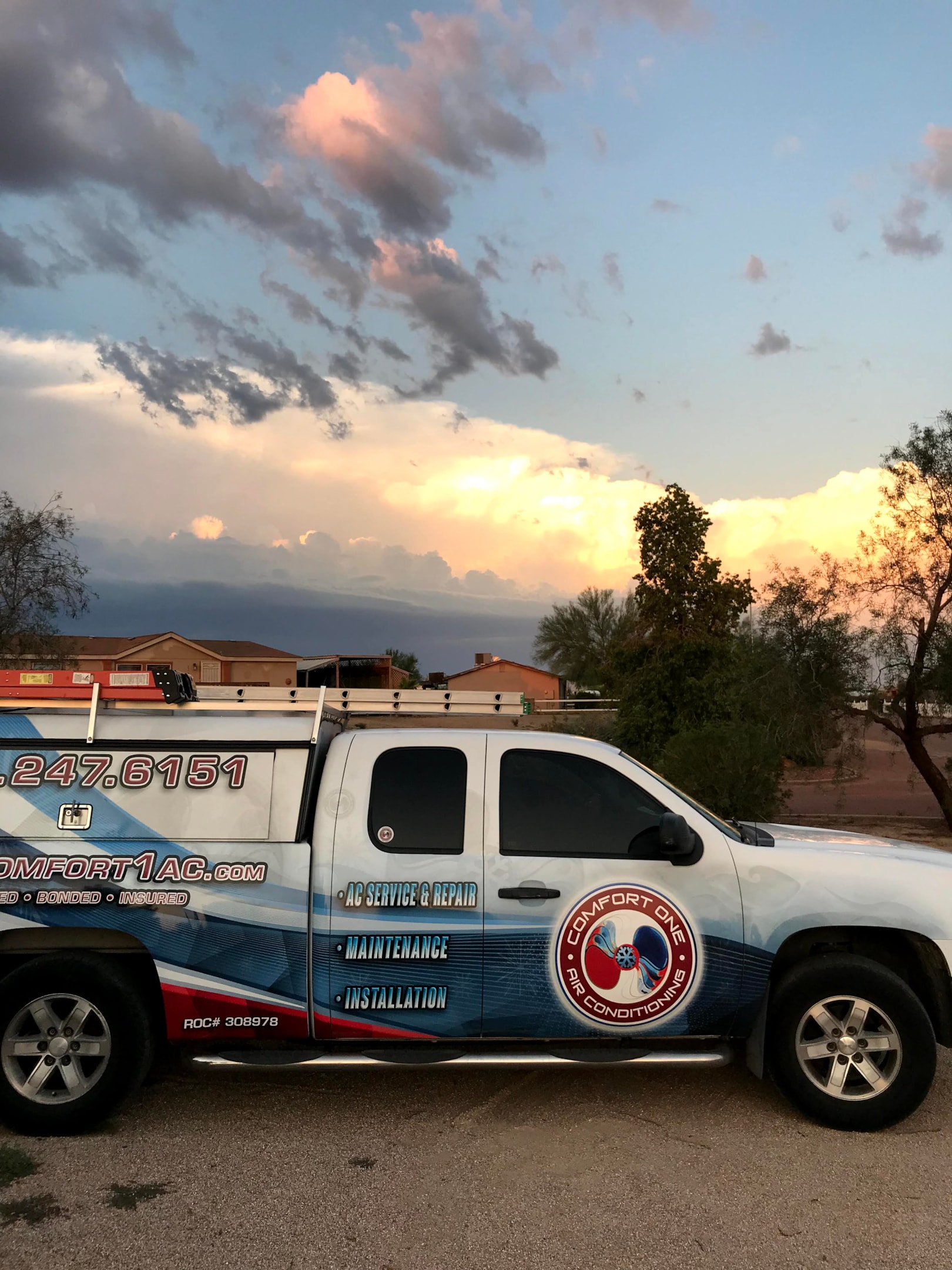
Shielding your HVAC system’s outdoor unit from dust and debris is crucial during the monsoon season. Dust storms can coat the unit with fine dust particles, leading to reduced efficiency and potential damage. One effective measure is to rinse the outdoor unit regularly to remove accumulated dust and debris, including clearing debris. This simple step can help maintain optimal performance and prevent dust buildup.
Elevating the outdoor unit is another practical tip to protect it from flood damage during heavy rains. By keeping the unit above ground level, you can minimize the risk of water damage and ensure it continues to operate efficiently. Additionally, trimming back surrounding bushes and trees can prevent debris from damaging the unit during storms.
Regularly cleaning the area around the air conditioners can also help avoid clogs from grass clippings and other debris. This proactive maintenance task ensures that the outdoor unit remains free from obstructions that could impede its performance. Implementing these practices can significantly enhance the longevity and efficiency of your HVAC system during the monsoon season and improve the overall functionality of ac systems.
Taking these steps to safeguard your outdoor unit ensures your HVAC system continues to provide cool air and maintain proper airflow, even during intense monsoon storms roll. Additionally, ensuring your ac units are well-protected with a surge protector will enhance their longevity. Proper cooling systems are essential for optimal performance.
Importance of Regular Maintenance During Monsoon Season
Regular maintenance is vital for keeping your HVAC system running smoothly during monsoon season. The increased dust and humidity characteristic of this period can place a significant strain on your system, making proactive maintenance essential. Professional maintenance can help prevent dust-related damage and ensure efficient operation.
Tasks and signs to maintain HVAC system efficiency include:
Flushing the drain line every few months to prevent clogs.
Maintaining the condensate line, especially during increased humidity in monsoon conditions, to avoid blockages.
Monitoring for unusual thermostat readings or frequent cycling of the HVAC system, which can indicate potential damage or inefficiency that needs prompt attention.
Increased indoor high humidity levels can indicate that the HVAC system is not functioning properly, underscoring the importance of regular upkeep. Addressing maintenance tasks early helps avoid costly repairs and ensures efficient HVAC operation throughout the monsoon season, especially in areas with extra humidity. Using a dehumidifier can help reduce the workload on your air conditioner during high humidity.
Upgrading to High-Efficiency Air Filters
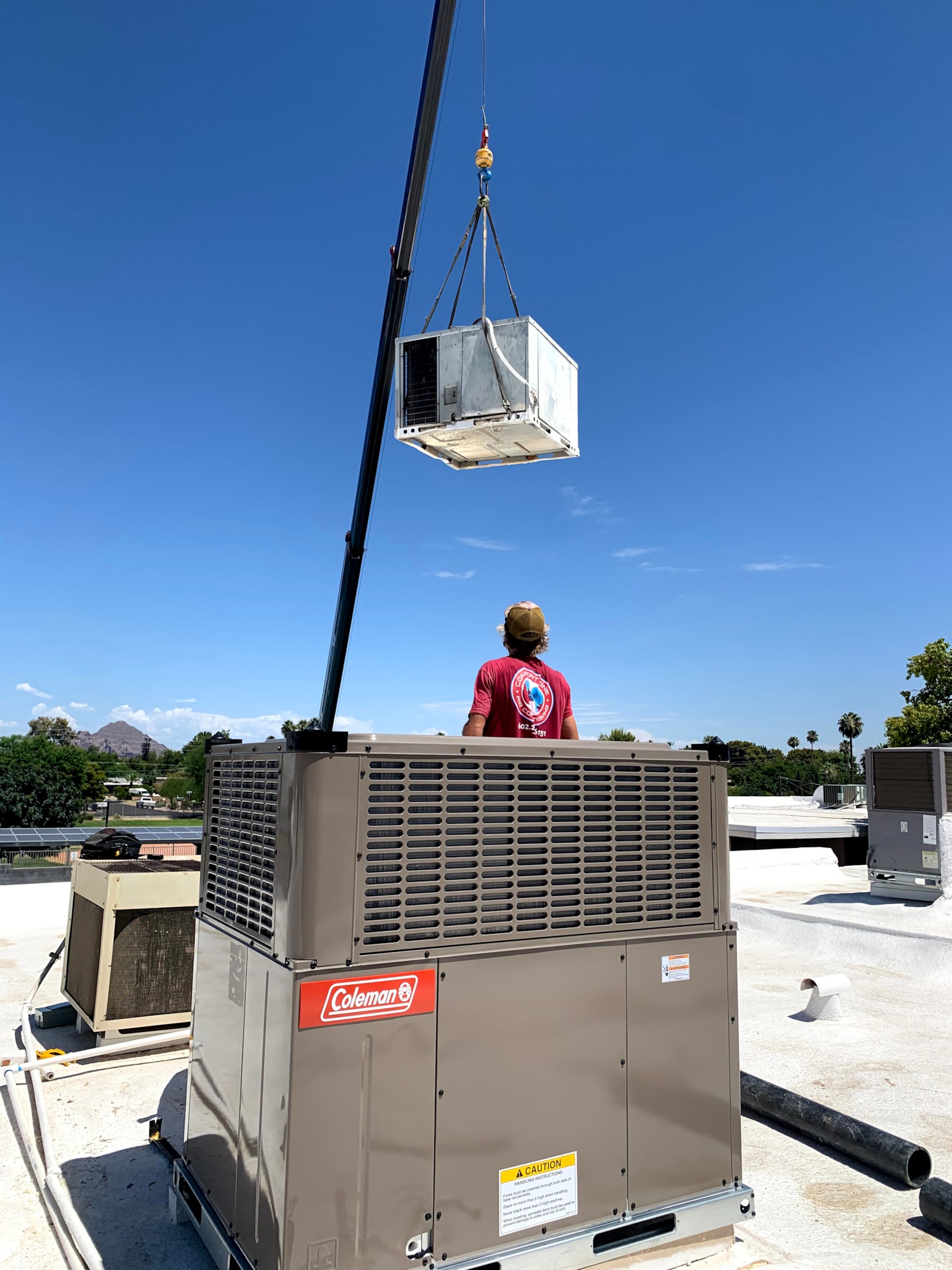
High-efficiency air filters can significantly improve the maintenance of your HVAC system during the monsoon season. High-efficiency particulate air (HEPA) filters offer several benefits: Higher-efficiency filters with a MERV rating of 8-11 can capture finer particles, but must be compatible with the HVAC system to avoid airflow restrictions.
Eliminate up to 99.9% of dust, mold, and bacteria from indoor air, improving indoor air quality.
Are especially beneficial for individuals with severe allergies or asthma.
Help reduce airborne allergens. An air filter can enhance these benefits even further.
Frequent changes of high-efficiency filters provide several benefits, making a big difference:
Prevent dirt from accumulating in the duct system, ensuring proper airflow and cooling efficiency.
Help reduce the strain on your HVAC unit.
Lead to lower energy bills.
Prolong the life of your air conditioning system.
Additionally, integrating an air purification system or air scrubber into your HVAC system can further improve air quality during dust storms. Investing in high-efficiency air filters enhances HVAC performance and maintains a comfortable indoor environment, even during dusty monsoon seasons.
Preventing Dust Buildup in Ductwork
Preventing dust buildup in ductwork maintains HVAC efficiency and ensures good indoor air quality. To minimize dust and debris in the ductwork, consider the following: Proper insulation around ducts can enhance HVAC performance by maintaining a consistent indoor temperature.
Regular inspection and maintenance of your HVAC system
Paying attention to components like cooling coils and drain pans
Taking a proactive approach, especially during the monsoon season when dust storms are more frequent
Moisture control is critical; repairing air leaks and ensuring proper preparation prevents biological growth in the ductwork. Inspecting ductwork during dust storms is essential to ensure pollutants do not enter the HVAC system and can help remove moisture in a few minutes once the storm passes. Proper insulation around ductwork helps prevent condensation in high humidity.
Sealing supply and return registers during construction can also prevent dust from entering the duct system. Routine cleaning of air ducts is recommended only as needed and not as a standard part of HVAC maintenance. By focusing on these preventive measures, you can reduce dust buildup in your ductwork and maintain a clean and efficient HVAC system.
Smart Thermostats for Better System Management
Smart thermostats offer a modern solution for managing your HVAC system more effectively during monsoon season. These devices can automatically adjust settings based on user schedules, helping to conserve energy and maintain indoor comfort. Many programmable or smart thermostat devices also offer geofencing technology, which detects when you leave home and adjusts the temperature to save energy.
The integration of smart thermostats can lead to improved indoor comfort by maintaining optimal thermostat settings despite fluctuating outdoor conditions. Having a smart thermostat allows you to make remote temperature adjustments via smartphone apps, providing convenience and increased energy management.
Incorporating a smart thermostat enhances HVAC efficiency and better manages your home’s energy consumption during the challenging monsoon season, allowing you to enjoy more energy.
Addressing Common Issues: Clogged Filters and Drain Lines
Clogged filters and drain lines are common issues that can significantly impact the performance of your HVAC system during the monsoon season. To clear a clogged drain line, you can inspect and remove blockages with tools like a wet/dry vacuum or a wire brush. Regularly checking and cleaning the drain line can prevent moisture buildup and potential mold growth.
Maintaining clean filters is equally important. Using high-efficiency filters and replacing them frequently can prevent clogged filters from restricting airflow and causing reduced system efficiency. Addressing these issues ensures your HVAC system runs smoothly and efficiently throughout the monsoon season and helps to avoid situations where clog filters could become a problem.
Professional Tune-Ups Before and After Monsoon Season
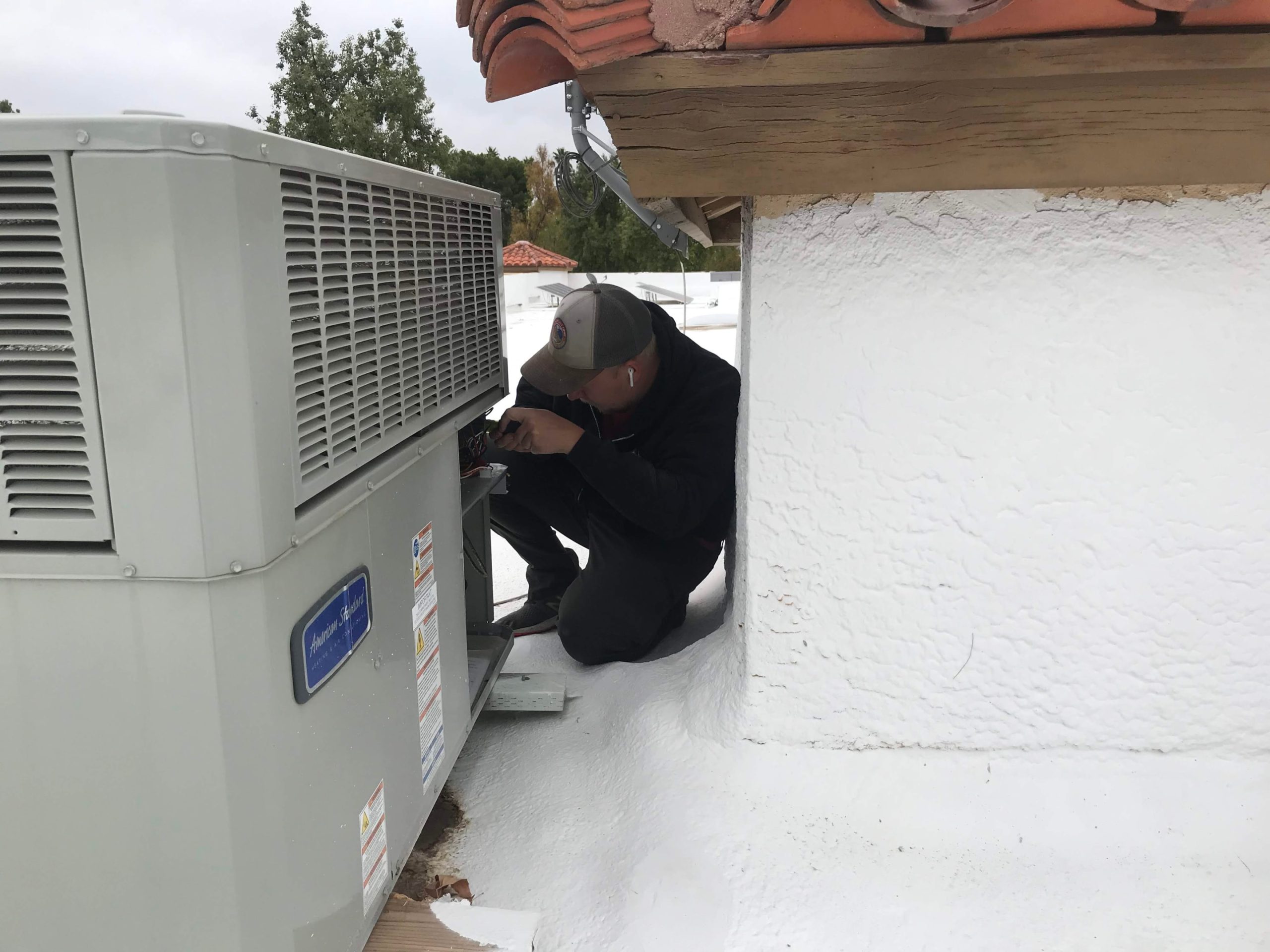
Professional tune up before and after the monsoon season keeps your HVAC system in top shape. Preventive maintenance before the monsoon season can enhance system performance and longevity by catching minor problems early and ensuring system efficiency. An inspection before the monsoon season includes checking the outdoor unit for blockages and cleaning condenser coils to prevent overheating due to dust accumulation.
Professionals can also ensure that HVAC units are clean and functioning optimally to handle the moisture levels during monsoons. After the monsoon season, it’s vital to perform a professional inspection to address any damage and maintain system performance during storm season.
Routine maintenance prevents potential breakdowns and expensive repairs, ensuring your HVAC system remains in excellent condition and running efficiently.
Enhancing Indoor Air Quality
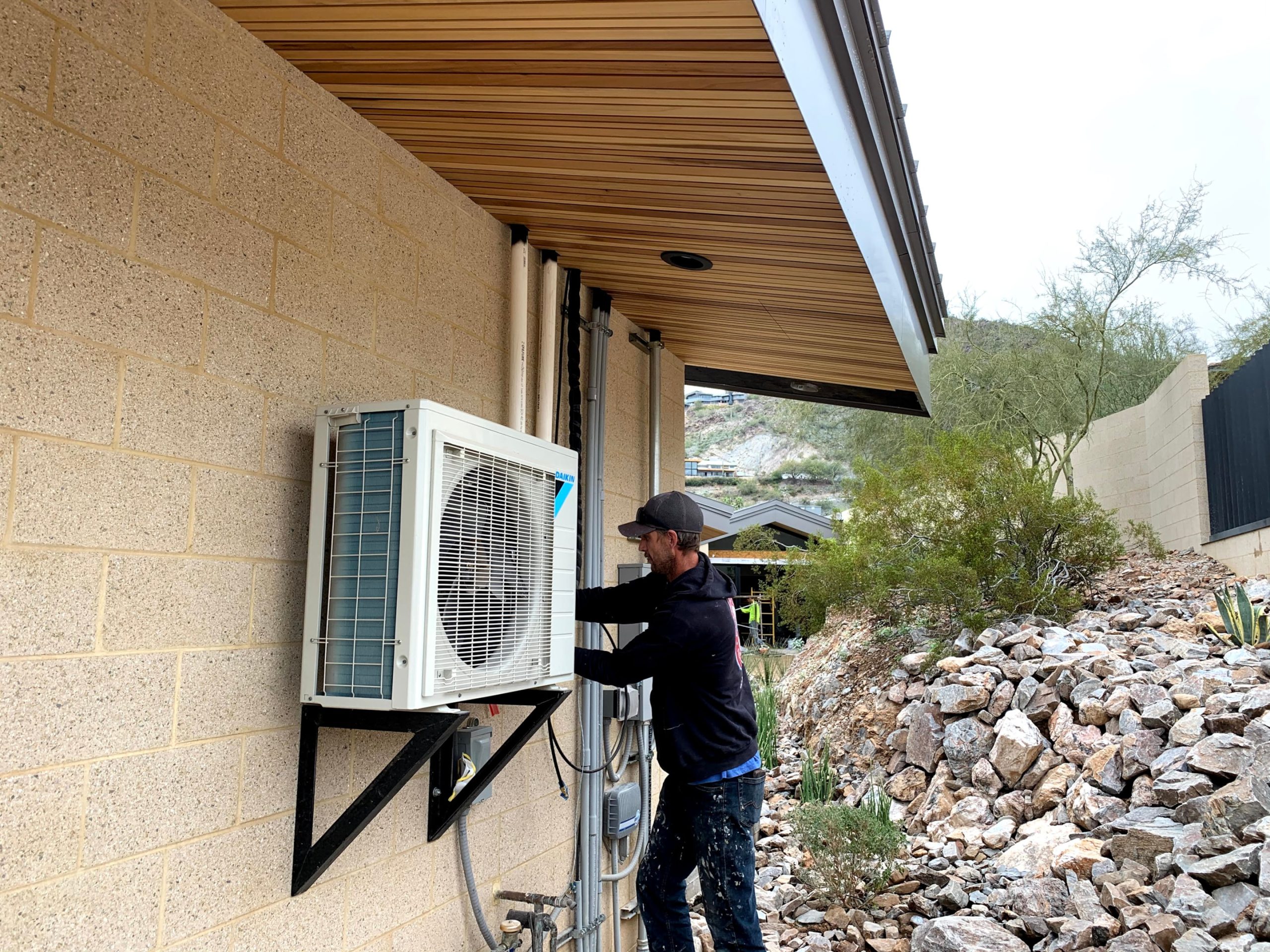
Enhancing indoor air quality during the monsoon season involves several key practices. Maintaining HVAC systems can reduce the risk of mold growth caused by increased humidity. Blocked drain lines can accumulate moisture, leading to higher humidity and potential mold growth, so keeping drain lines clear is essential. When humidity levels rise, your air conditioner must remove excess moisture to cool the air.
Regular maintenance of air cleaners is crucial for their long-term performance and effectiveness. Opening windows and using exhaust fans can significantly enhance indoor air ventilation.
Implementing these practices ensures a healthier indoor environment and improves overall air quality during the monsoon season.
Recognizing Signs of HVAC Damage
Recognizing signs of HVAC damage from dust and debris allows for timely intervention and prevents further damage. Signs that dust has severely clogged the coils or filters include unusual noises, weak airflow, and higher energy bills. Pooling water, rust on the drain pan, and inadequate cooling can indicate a clogged AC drain line.
If you notice these signs, it’s essential to call an HVAC professional to address the issue and prevent costly repairs. Staying vigilant and recognizing these signs early helps avoid extensive damage and ensures efficient HVAC operation.
Summary
In conclusion, protecting your HVAC system from the challenges of Arizona’s monsoon season involves a combination of regular maintenance, air filters, and proactive measures to safeguard outdoor units. By staying vigilant and addressing potential issues early, you can ensure your HVAC system runs smoothly and maintains optimal indoor air quality. Remember, a well-maintained HVAC system not only keeps your home comfortable but also saves you from costly repairs and higher energy bills.
Frequently Asked Questions
How often should I replace my air filters during the monsoon season?
You should replace your air filters every month during the monsoon season to ensure optimal airflow and maintain good indoor air quality. This regular maintenance helps prevent moisture buildup and improves overall air quality in your home.
How can I protect my outdoor HVAC unit from dust and debris?
To effectively protect your outdoor HVAC unit from dust and debris, regularly rinse the unit, elevate it to avoid flood damage, and trim surrounding shrubs and trees. This proactive approach will help maintain the unit’s efficiency and longevity.
What are common signs of HVAC damage caused by dust?
Unusual noises, weak airflow, higher energy bills, pooling water, rust on the drain pan, and inadequate cooling are common signs of HVAC damage caused by dust. Addressing these symptoms promptly can help maintain your system’s efficiency and longevity.
Why is regular maintenance important during the monsoon season?
Regular maintenance during the monsoon season is crucial as it prevents dust-related damage, ensures efficient operation, and reduces the risk of costly repairs. This proactive approach helps maintain proper airflow and indoor air quality, safeguarding your environment.
Author
-

Tapani Ojalehto is a RSI-top tech with over 15 years of experience in the HVAC industry. Tapani Ojalehto is the owner and founder of Comfort One Air Conditioning LLC, a HVAC company in Scottsdale, Arizona. Tapani enjoys hockey, archery, hunting, fishing and everything outdoors. He loves quality time with his wife Jessica of 15 years and their pup Loki Bear.
View all posts


